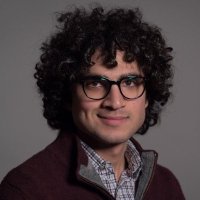
Research group name: Quantum Nanostructures and Nanofabrication Group (QNN)
Hometown, Country: Isfahan, Iran until age 18 and then Toronto, Canada
Academic History Prior to coming to MIT: B.ASc. in Nanotechnology Engineering, University of Waterloo, Canada
What brought you to MIT? My undergraduate program exposed me to various facets of nanotechnology but I was mainly interested in optics and nanophotonics. Visiting MIT and observing the sheer breadth of research that is going on here pushed me to rethink my graduate research direction. After being introduced to the concepts of interaction-free measurement and quantum electron microscopy (QEM), my mind was set on coming to MIT and joining my current research group. Changing research direction was quite scary at first but there were sufficient concepts in common between light optics and electron optics to give me a starting point.
What problem are you trying to solve with your current research and what are some possible applications? I am currently working on the development of a diffractive electron mirror that could work as a lossless electron beam-splitter. This is part of a larger project with the aim of developing the first quantum electron microscope, a tool that is proposed to be capable of imaging biological samples on a nanometer-scale resolution without damaging them.
What interests you most about your research? One of the most interesting aspects of my research is the fact that it originated from a fairly simple thought proposed by two physicists (Elitzur and Vaidman) in 1993. That thought experiment employed the principles of quantum interference to show the possibility of a counter intuitive concept: interaction-free measurement. Working on building a tool that could realize such a bizarre concept is one of the most exciting part of my research, not to mention the possibility of revolutionizing bio-imaging with low-damage electron microscopy.
What are your future plans? Early on in my academic career, I had the false belief that a job in academia is the one true path and anyone who does not stay in academia is a “sellout”. After living in Boston for a few years and meeting many smart and accomplished people who choose paths other than academia and still remain impactful in their fields, I have opened up my mind to other career paths such as industry while still considering academia as an option.
